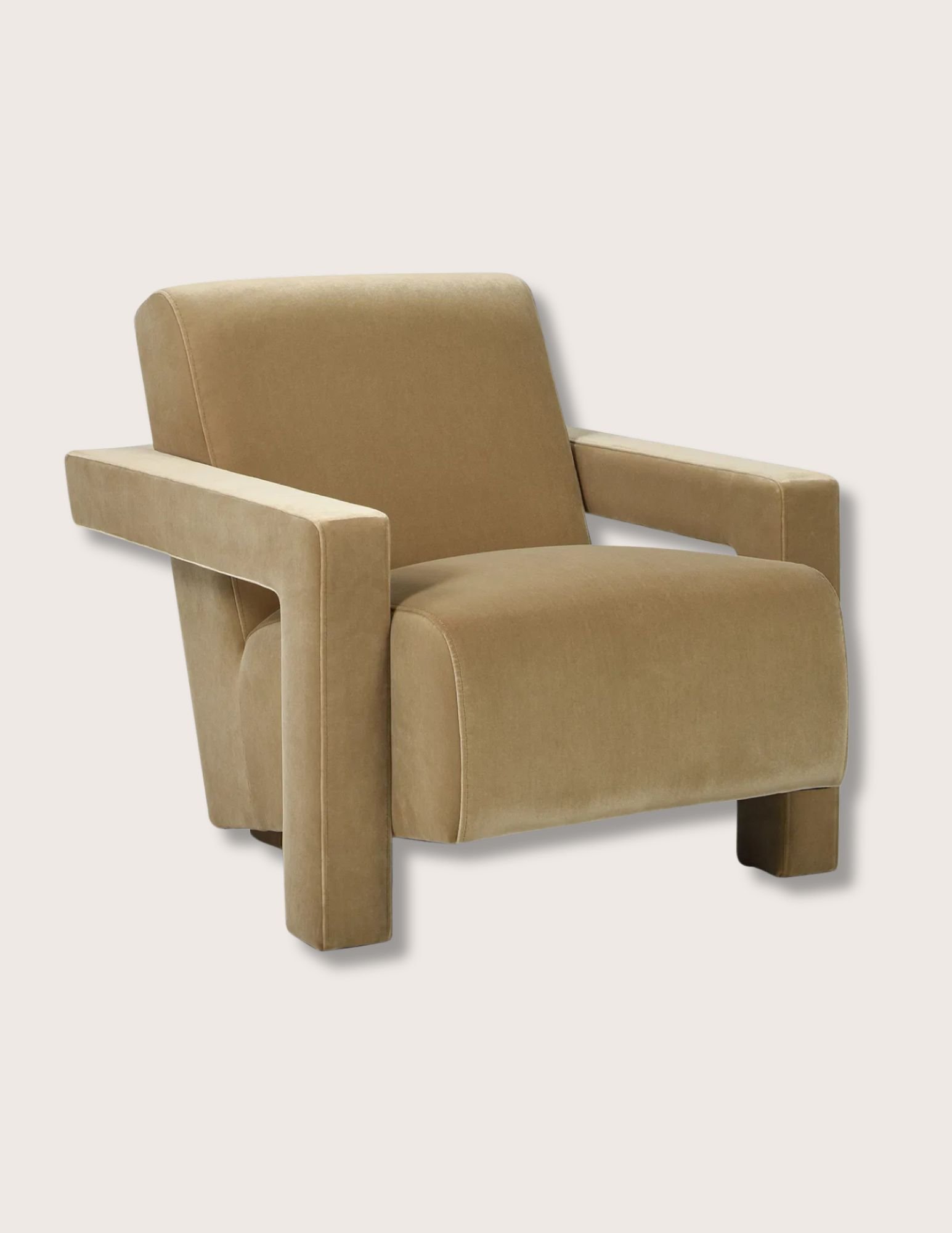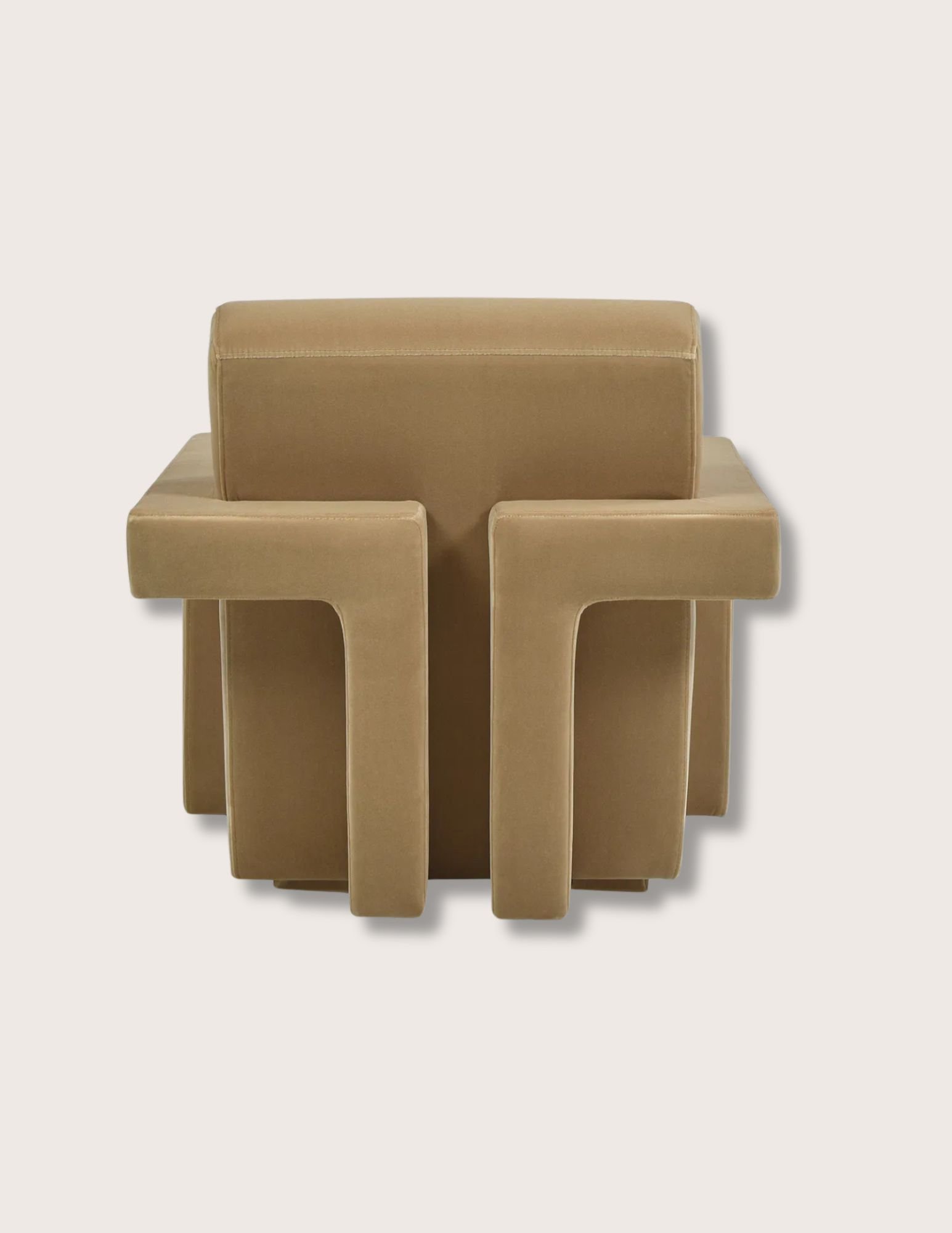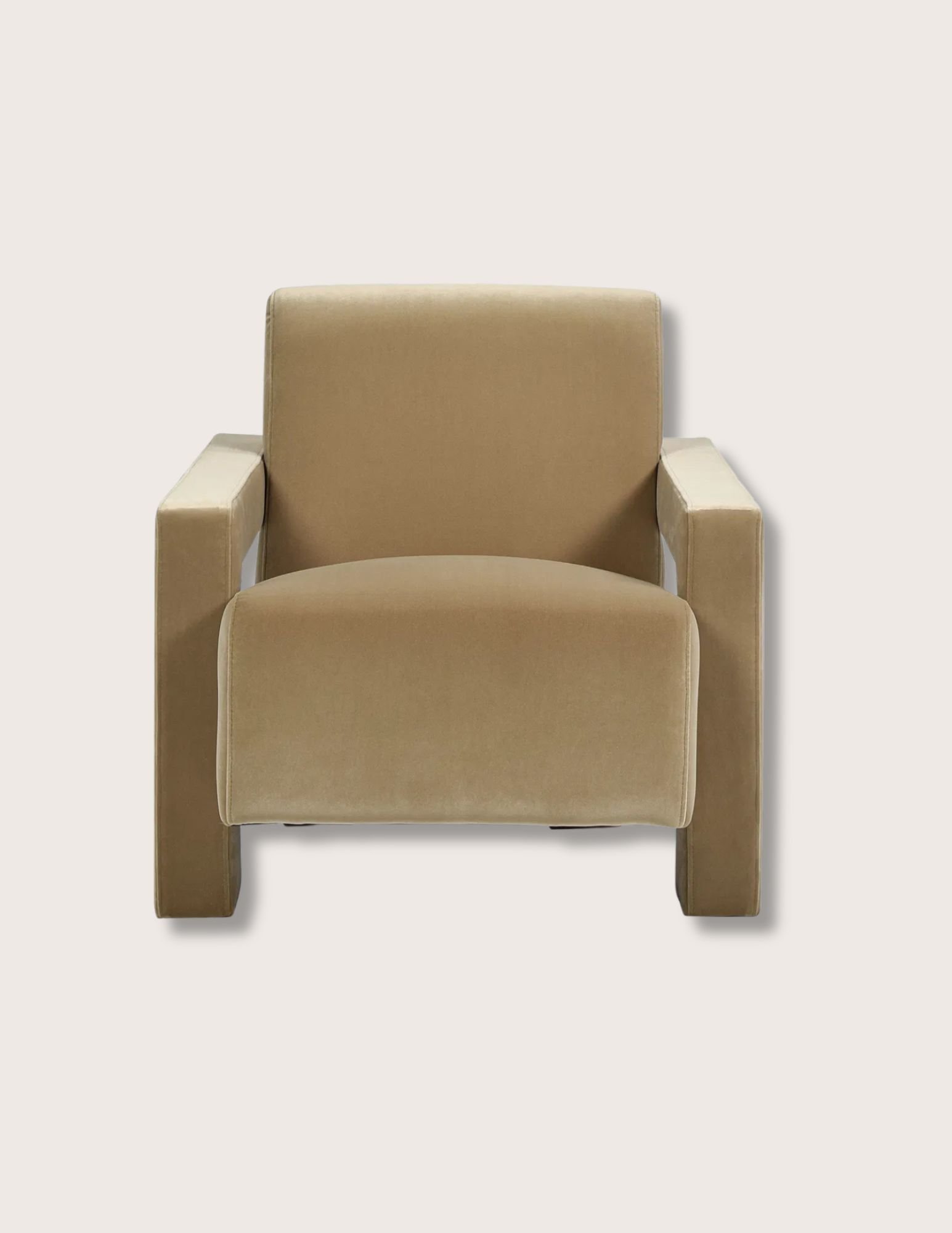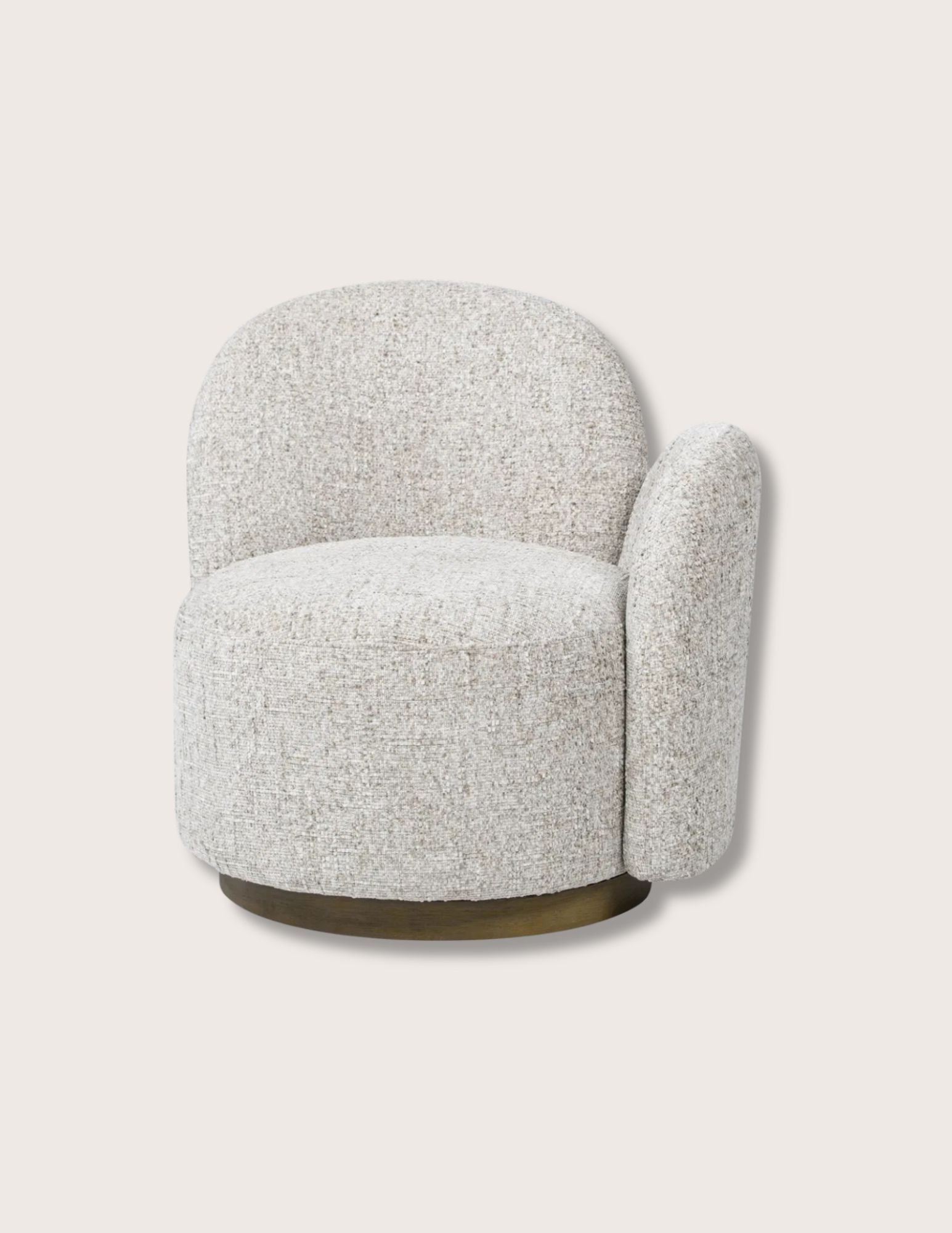 Image 1 of 3
Image 1 of 3

 Image 2 of 3
Image 2 of 3

 Image 3 of 3
Image 3 of 3




Palmares Gray Swivel Chair
Details
Our Palmares Gray Swivel Chair brings something new to your interior with just a touch of throwback vibes. A modern piece with a mid-century feel, this ultra-comfy lounge chair features sleek velvet upholstery and a thick, cushioned seat and backrest all atop a stylish black metal base. The eye-catching gray sheen is an instant win, bringing an elegant touch to your space. And the 360-degree swivel is an added bonus for seating in the living room or home office where added movement is always a plus. This classic, contemporary styling piece is sure to be a beautiful addition to your favorite room.
Editors' Note
This piece is inspired by Brazilian Modernism - a style established in the early 20th century that blended the nation’s Indigenous, African and Portuguese design aesthetics. Named for Palmares — the autonomous Black state that arose within Portuguese colonial Brazil in 1605 - the name of this piece is an homage to Brazil’s Maroon communities. Comprised primarily of those who escaped enslavement, Maroons existed in every part of the Americas, from the Gullah and Geechee communities of the United States, to San Basilio of Colombia, which grew so powerful under its monarch, Benkos (Domingo) Bioho, that the governor of Cartagena was forced into negotiations with the state. Despite constant warfare with colonizers and frequent sieges, may of these communities so often eluded, frustrated, or outright defeated European forces that several had to be recognized as independent nations, even if only for a time. Called Quilombos in Portuguese, these polities varied in size from small, single villages, to large confederations. Palmares was once such union, a coalition of some 10 villages around the capitol city, Macaco. By the time of its greatest leader Ganga Zumba (or Nganga Nzumba, "Great Lord"), who ruled from 1630 - 1674, Palmares had reach an estimated population of as many as 20,000 people, with Macaco alone boasting as many as 2000 homes and a Catholic church. Ruled and defended predominantly by members of Zumba's extended family, the villages of Palmares enjoyed diverse populations consisting of Africans, Indigenous Brazilians, and Criolos — Brazilian-born people of African descent. Significant portions of the population were also of mixed ancestry. Those whose heritage was Indigenous and Portuguese were called, Cabocolos, while those of mixed African and Portuguese ancestry were referred to as Mulatto. In 1695, after two years of open and incessant war, culminating in a 45 day siege of Macaco, Palmares fell to Brazilian forces. Yet recent scholarship suggests that the Maroon community did not end with the nation. Rather it moved further into the mountains and jungles, forming new settlements.
Details
Our Palmares Gray Swivel Chair brings something new to your interior with just a touch of throwback vibes. A modern piece with a mid-century feel, this ultra-comfy lounge chair features sleek velvet upholstery and a thick, cushioned seat and backrest all atop a stylish black metal base. The eye-catching gray sheen is an instant win, bringing an elegant touch to your space. And the 360-degree swivel is an added bonus for seating in the living room or home office where added movement is always a plus. This classic, contemporary styling piece is sure to be a beautiful addition to your favorite room.
Editors' Note
This piece is inspired by Brazilian Modernism - a style established in the early 20th century that blended the nation’s Indigenous, African and Portuguese design aesthetics. Named for Palmares — the autonomous Black state that arose within Portuguese colonial Brazil in 1605 - the name of this piece is an homage to Brazil’s Maroon communities. Comprised primarily of those who escaped enslavement, Maroons existed in every part of the Americas, from the Gullah and Geechee communities of the United States, to San Basilio of Colombia, which grew so powerful under its monarch, Benkos (Domingo) Bioho, that the governor of Cartagena was forced into negotiations with the state. Despite constant warfare with colonizers and frequent sieges, may of these communities so often eluded, frustrated, or outright defeated European forces that several had to be recognized as independent nations, even if only for a time. Called Quilombos in Portuguese, these polities varied in size from small, single villages, to large confederations. Palmares was once such union, a coalition of some 10 villages around the capitol city, Macaco. By the time of its greatest leader Ganga Zumba (or Nganga Nzumba, "Great Lord"), who ruled from 1630 - 1674, Palmares had reach an estimated population of as many as 20,000 people, with Macaco alone boasting as many as 2000 homes and a Catholic church. Ruled and defended predominantly by members of Zumba's extended family, the villages of Palmares enjoyed diverse populations consisting of Africans, Indigenous Brazilians, and Criolos — Brazilian-born people of African descent. Significant portions of the population were also of mixed ancestry. Those whose heritage was Indigenous and Portuguese were called, Cabocolos, while those of mixed African and Portuguese ancestry were referred to as Mulatto. In 1695, after two years of open and incessant war, culminating in a 45 day siege of Macaco, Palmares fell to Brazilian forces. Yet recent scholarship suggests that the Maroon community did not end with the nation. Rather it moved further into the mountains and jungles, forming new settlements.

Additional Details
Single swivel lounge chair
Color: Gray
Material: Metal, Velvet, Foam
Dimensions:30" x 31" x 31"
Weight: 28 lbs
Imported
Made to order
Ships to the US in 3-4 weeks

























